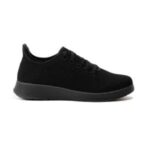Heel pain is a common problem affecting people of all ages, often interfering with daily activities such as walking, standing, or exercising. Persistent discomfort can impact mobility, posture, and overall quality of life. Identifying the underlying cause of heel pain is essential to prevent worsening symptoms and long-term foot issues.
Supportive footwear plays an important role in alleviating heel pain and protecting foot health. Shoes designed with cushioning, proper arch support, and heel stability help reduce pressure on sensitive areas. Choosing heel pain relief shoes suited to specific foot conditions improves comfort, mobility, and long-term foot function.
Understanding Heel Pain & more
Heel pain typically develops due to inflammation, strain, or structural issues within the foot. One of the most frequent causes is plantar fasciitis, which occurs when the thick band of tissue along the sole becomes irritated or inflamed. Pain is often sharp, particularly when first standing in the morning or after long periods of rest.
Heel spurs, small calcium deposits on the heel bone, are another source of discomfort. These often develop alongside plantar fasciitis and can intensify pain when walking or standing. Other contributing factors include Achilles tendinitis, repetitive stress, poor footwear, obesity, or age-related changes in foot structure.
Addressing heel pain early is crucial. Without proper support, the condition can worsen, leading to compensatory changes in gait, strain on other joints, or chronic inflammation. Footwear specifically designed for heel support is a key preventive and therapeutic measure.
Foot Conditions That Benefit Most
Plantar Fasciitis
Plantar fasciitis is one of the leading causes of heel pain. Individuals with this condition benefit from shoes with firm arch support, cushioned soles, and shock-absorbing midsoles. Proper footwear helps distribute weight evenly and reduces strain on the plantar fascia, promoting healing and improving mobility.
Symptoms include:
- Sharp heel pain in the morning or after prolonged rest
- Pain when climbing stairs or standing for long periods
- Swelling or tenderness around the heel
Supportive footwear prevents over-stretching of the plantar fascia and complements stretching exercises or orthotics prescribed by healthcare professionals.
Heel Spurs
Heel spurs can cause chronic discomfort during movement. Shoes designed with deep heel cups and extra cushioning reduce impact on the heel bone and surrounding tissue. This protection allows for more comfortable walking and standing without aggravating the spur.
Symptoms include:
- Sharp or stabbing pain when stepping down
- Pain during prolonged standing or walking
- Localised tenderness at the bottom of the heel
Using well-designed shoes can make daily activities more manageable and reduce the need for additional interventions.
Achilles Tendinitis
This condition occurs when the tendon connecting the calf to the heel becomes inflamed, often due to overuse or strain. Shoes with a slight heel lift or cushioning around the heel area reduce tension on the tendon, allowing for more natural movement and improved comfort.
Symptoms include:
- Pain or stiffness along the back of the heel
- Swelling or thickening of the tendon
- Discomfort during physical activity or after prolonged sitting
Correct footwear, combined with stretching and strengthening exercises, supports recovery and reduces the risk of further injury.
Flat Feet / Fallen Arches
Flat feet or fallen arches can lead to overpronation, where the foot rolls inward excessively. This can cause strain on the heel, arch, and ankle. Supportive shoes with structured soles and firm arch support stabilise the foot, improving alignment and reducing stress on the heel.
Symptoms include:
- Pain along the arch or heel
- Fatigue in the feet after standing
- Swelling or discomfort in the ankles
Shoes accommodating orthotics or custom insoles are particularly beneficial, providing personalised support for daily activities.
Arthritis / Joint Pain
Arthritis or other degenerative joint conditions often make walking or standing uncomfortable. Shoes with cushioned soles, shock-absorbing materials, and proper support reduce impact on joints in the foot, ankle, and lower limb.
Symptoms include:
- Persistent joint pain in the foot, ankle, or heel
- Swelling and stiffness
- Difficulty walking or standing for long periods
Well-cushioned, supportive shoes help individuals stay active while protecting vulnerable joints and improving balance.
Choosing the Right Heel Pain Relief Shoes
Selecting appropriate footwear involves considering fit, arch support, cushioning, and stability. Shoes with removable insoles allow the addition of custom orthotics if needed.
Tips for selecting shoes:
- Fit & Size: Ensure there is sufficient toe space and no rubbing or tight spots.
- Arch Support: Maintain alignment and reduce strain on the plantar fascia.
- Cushioning: Shock-absorbing soles help prevent impact-related pain.
- Heel Cup / Elevation: Stabilises the heel and protects tender areas from pressure.
Trying on shoes at the end of the day is recommended, as feet naturally swell during daily activity. Professional guidance from a podiatrist can ensure shoes match the specific foot condition and provide optimal support.
Conclusion
Heel pain can affect mobility, posture, and overall wellbeing, but understanding which foot conditions benefit most from supportive footwear is essential.
People with plantar fasciitis, heel spurs, Achilles tendinitis, flat feet, or arthritis often find relief with properly designed shoes. Integrating heel pain relief shoes from Axign Medical Footwear into daily routines, alongside stretching and strengthening exercises, can improve comfort, prevent further complications, and support long-term foot health naturally.

